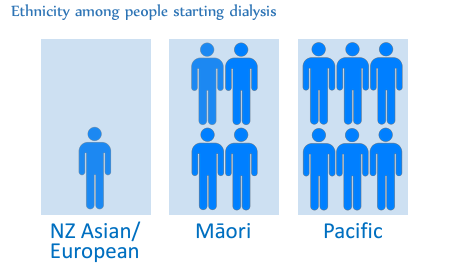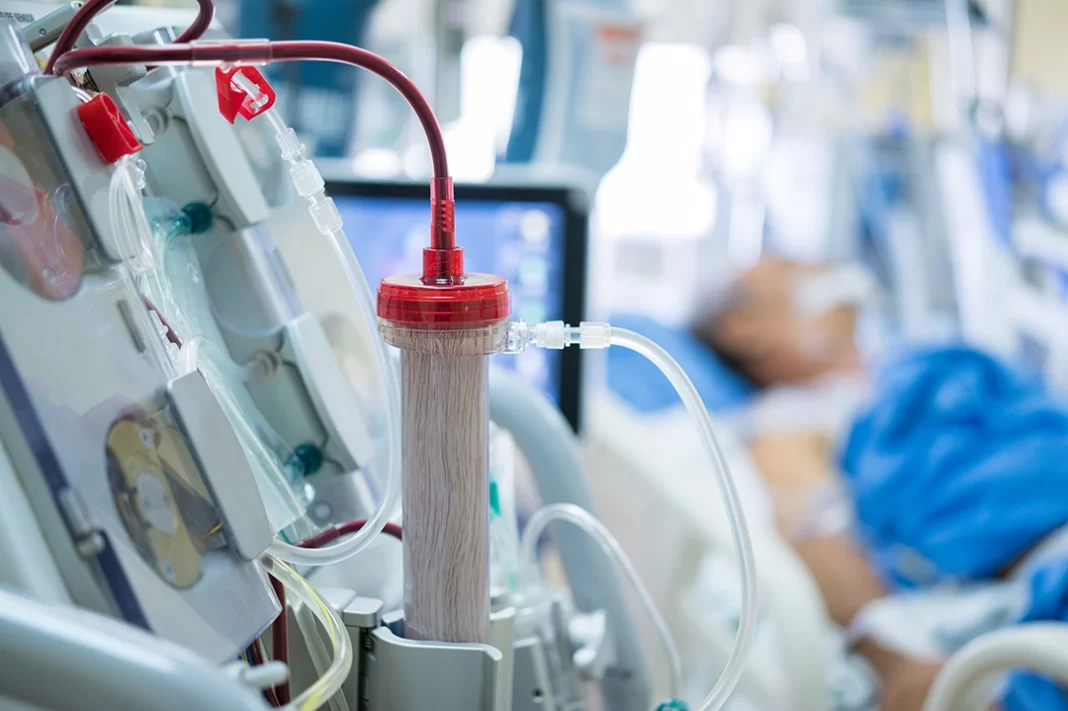I’ve been inspired to write this story because I have two family members who are currently on dialysis, and I knew of a couple of mothers who recently passed away while on dialysis. Their journeys have opened my eyes to the struggles and realities that many Pacific Islanders face when dealing with chronic kidney disease (CKD). This story is personal, but it is also a reflection of a broader issue affecting many families across the Pacific.
In our communities, kidney disease is silently becoming a health crisis, claiming lives and forcing families to make difficult decisions. This is not just about dialysis machines or hospital visits—it’s about the lives of people we love. We need to talk about it, understand it, and take action to improve the health and futures of our people.
The Rise of Kidney Disease in the Pacific
Kidney disease is no longer a distant problem—it’s a reality that is impacting families across the Pacific. In countries like Fiji, Samoa, Tonga, and even among Pacific communities in New Zealand and Hawai‘i, the rates of CKD are shockingly high. For example, 7-10% of people in Fiji are affected by CKD, and this number is likely growing. Similarly, Pacific Islanders living in New Zealand are 2-3 times more likely to develop kidney disease than the general population.
A major reason for this increase is the rise in conditions like diabetes and high blood pressure, both of which damage the kidneys over time. For many people, CKD goes undetected until the disease is very advanced, meaning they may not know they have a problem until their kidneys can no longer function properly.
The Dialysis Journey
When kidney function drops to a critical level, dialysis becomes the only option to survive. Dialysis is a treatment where a machine does the work that healthy kidneys normally do—removing waste and excess fluid from the blood. While it’s life-saving, it’s also a difficult process that must be done several times a week, often for the rest of the patient’s life.
For those in larger Pacific nations like Fiji, there are some dialysis centers, but access is limited. A single session can cost around $250 FJD, and since many patients need multiple sessions each week, the cost quickly becomes overwhelming for most families. This forces many people to make heartbreaking decisions—sometimes going without the treatment they need.
In smaller islands, the situation is even more dire. Some people have to relocate to countries like New Zealand or Australia to receive regular dialysis, often leaving behind their families and support systems.
Life Expectancy and Hope on Dialysis
Globally, the average life expectancy for someone on dialysis is between 5 to 10 years, but it’s important to remember that many people can live much longer if they follow their treatment plan carefully. For Pacific Islanders, managing other health conditions, like diabetes and heart disease, plays a crucial role in improving longevity.
While dialysis can be daunting, there are success stories—individuals who have adjusted their lifestyles, followed medical advice, and continued to live meaningful, fulfilling lives.

A Healthy Diet for Pacific Islanders on Dialysis
One of the most important ways to support kidney health while on dialysis is through a balanced diet. For Pacific Islanders, this means taking a close look at some traditional and modern foods to ensure they fit within the guidelines for kidney disease. Here are some tips to consider:
- Limit Potassium and Phosphorus: Traditional Pacific fruits like bananas, oranges, and taro are high in potassium, which can be dangerous for people with kidney problems. Try substituting these with fruits like apples, papaya, and breadfruit, which are lower in potassium and safer for kidney health.
- Cut Down on Sodium: Many Pacific dishes use salt or salty ingredients like soy sauce and processed meats. Reducing sodium is essential for controlling blood pressure and preventing fluid build-up in the body. Use herbs, spices, or citrus to flavor food instead of salt.
- Moderate Protein Intake: While fish and pork are staples in Pacific diets, people on dialysis need to be mindful of how much protein they consume. Too much can strain the kidneys. Instead, focus on eating high-quality, lean proteins like fish in smaller portions.
- Fluid Control: Drinking too much water or liquid can cause swelling and high blood pressure in dialysis patients. Be sure to follow your doctor’s advice on how much fluid to drink each day.
By making these dietary changes, individuals can improve their overall health and better manage their kidney disease. It may be challenging at first, but many Pacific Islanders have successfully adjusted their diets to suit their dialysis needs without losing the essence of their traditional cuisine.
Taking Action as a Community
While the individual journey through kidney disease and dialysis can be tough, the strength of Pacific Islander communities can make a huge difference. Governments, healthcare providers, and local leaders are working together to provide better access to screening and treatment for kidney disease.
Programs in places like American Samoa have launched screening initiatives to catch kidney disease early. Data from these efforts show that 40% of those tested already had early signs of CKD, underscoring the importance of regular health checks. Early detection can mean the difference between managing kidney disease through diet and lifestyle or requiring dialysis later on.
The Pacific Islands Kidney Network is another effort aimed at bringing more resources to the region, advocating for better care, and creating awareness around kidney health. Their work shows that as a community, we can support each other through education, advocacy, and action.
Navigating a Healthier Future
Kidney disease and dialysis are growing challenges for Pacific Islanders, but they are challenges we can face together. By making healthier choices, seeking early detection, and leaning on the strength of our communities, we can create a future where fewer people need dialysis and more people can live healthier, longer lives.
There is hope on the horizon. With the support of our families, doctors, and communities, Pacific Islanders can continue to thrive, even in the face of chronic illness.
Remember, your health is your wealth—take care of it, and it will take care of you.





